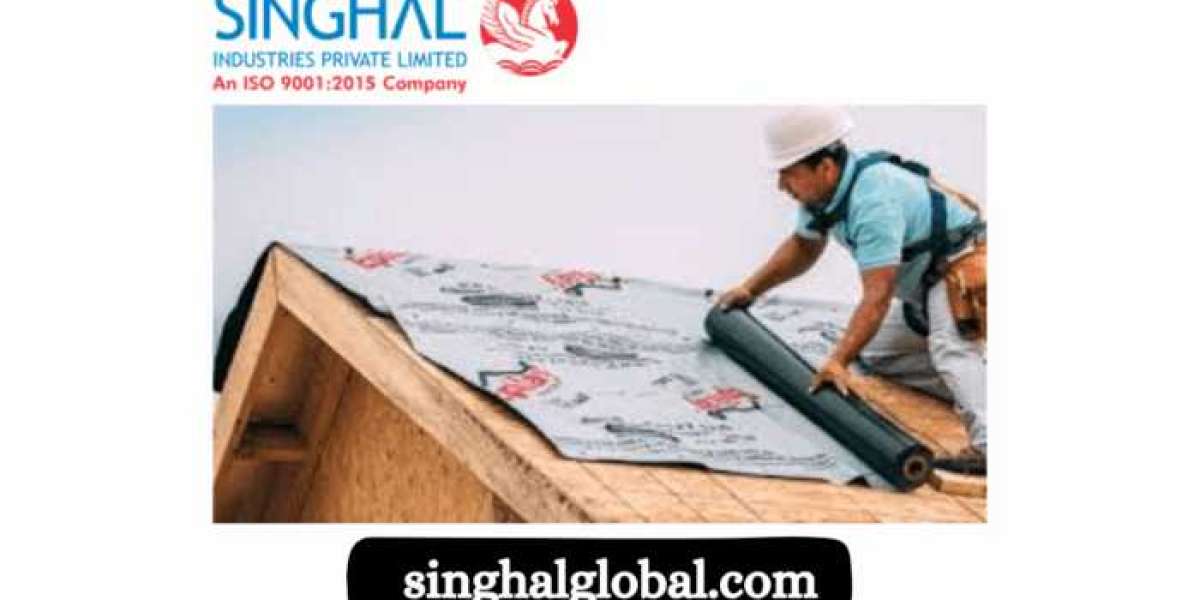Your roof is the first line of defense against the elements, safeguarding your home from rain, wind, snow, and even sun. But what safeguards your roof itself? This critical job falls to the unsung hero – the roof underlayment. While it may not be the most glamorous component, underlayment plays a vital role in extending the lifespan and performance of your roof. Upgrading to a premium underlayment can be a wise investment, offering significant benefits over standard options.
Understanding Roof Underlayment
Roof underlayment, also known as roof felt or sarking, is a water-resistant barrier installed directly beneath the shingles or other roofing materials. It acts as a secondary layer of protection, providing several key functions:
- Waterproofing: Underlayment helps prevent water infiltration caused by wind-driven rain, ice dams, or minor shingle breaches.
- Leak Barrier: In the event of shingle damage, a good underlayment can act as a temporary barrier, preventing leaks and giving you time for repairs.
- Ventilation: Some underlayment options allow for better ventilation beneath the shingles, reducing moisture buildup and promoting roof health.
- Secondary Defense: Underlayment provides an additional layer of protection against windblown debris and helps improve fire resistance.
Standard Underlayment vs. Premium Underlayment
Basic asphalt-saturated felt is the most common and inexpensive underlayment option. However, it has limitations:
- Limited Durability: Felt can deteriorate over time, especially when exposed to sunlight and heat, losing its water-resistant properties.
- Moisture Susceptibility: Felt can absorb moisture, leading to mold growth and potential deck rot.
- Temperature Sensitivity: Asphalt in felt can become brittle in extreme cold or melt in extreme heat, compromising its effectiveness.
Premium underlayment options address these limitations, offering superior performance and longer lifespans. Here are some popular types of premium underlayment:
- Synthetic Underlayment: Made from advanced materials like polypropylene or non-woven polyester, synthetic underlayment offers superior tear resistance, breathability, and resistance to mold and mildew.
- High Temp Roof Underlayment: Specifically formulated to withstand extreme temperatures, High temp roof underlayment is ideal for climates with scorching summers or freezing winters. It maintains its flexibility and strength regardless of the weather.
- Rubberized Asphalt Underlayment: Combining asphalt with synthetic rubber polymers, this underlayment offers superior strength, flexibility, and waterproofing compared to felt. It's also less susceptible to tears and punctures during installation.
Blue Roofing Underlayment: Blue roofing underlayment is a broad term encompassing various high-performance underlayment options, often made from synthetic materials or a combination of asphalt and synthetics. These underlayments are known for their vibrant blue color, which makes them easily identifiable during installation and inspections.
Steel Roof Underlayment: Steel roof underlayment, typically made from galvanized steel, offers the ultimate in strength and durability. While more expensive than other options, it's ideal for high-wind areas or applications requiring maximum protection, such as metal roofs.
Benefits of Premium Underlayment
Investing in a premium underlayment offers several advantages for your roof:
- Enhanced Durability: Premium materials resist deterioration from sunlight, heat, and cold, ensuring long-lasting performance.
- Superior Waterproofing: These underlayments provide a stronger barrier against water infiltration, protecting your roof deck from leaks and moisture damage.
- Increased Tear Resistance: They are less prone to tears and punctures during installation and resist damage from windblown debris.
- Improved Ventilation: Some premium underlayments allow for better airflow beneath the shingles, preventing moisture buildup and promoting roof health.
- Peace of Mind: Knowing your roof has the best possible underlayment protection provides peace of mind and can potentially increase your home's resale value.
Choosing the Right Premium Underlayment
With various premium underlayment options available, selecting the right one for your roof depends on several factors:
- Climate: Consider your region's temperature extremes. High temp roof underlayment is ideal for hot or cold climates.
- Roof Pitch: Steeper roofs require a more robust underlayment with superior tear resistance.
- Shingle Material: Certain underlayments may be better suited for specific shingle types like metal roofs (steel underlayment).
- Budget: Premium underlayment typically comes at a higher cost than basic felt, but the long-term benefits often outweigh the initial expense.
Conclusion
Your roof is a significant investment, and protecting it with a premium underlayment is a wise decision. By choosing the right underlayment for your climate and roof type, you can ensure optimal performance, minimize leaks, and maximize the lifespan of your entire roof system. This translates to peace of mind for decades to come, allowing you to focus on what truly matters – enjoying your home.
FAQs (Frequently asked questions)
Q1. Is premium underlayment worth the extra cost?
A1. While the initial cost of premium underlayment may be higher, it's an investment that pays off in the long run. A longer-lasting roof translates to fewer repairs and replacements, saving you money over time.
Q2. How long does premium underlayment last?
A2. The lifespan of premium underlayment can vary depending on the specific material and manufacturer's warranty. However, they typically last significantly longer than basic felt underlayment, often exceeding 20-30 years.
Q3. Can I install premium underlayment myself?
A3. While some types of underlayment are DIY-friendly, it's recommended to hire a professional roofer for installation. They have the expertise to ensure proper application and flashing techniques, maximizing the benefits of your premium underlayment.












